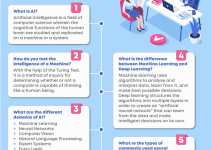Are you ready to step into a world beyond reality, where you can be whoever you want to be and do whatever you want to do? Enter the world of Metaverse platforms, where virtual worlds are becoming more and more realistic, and the possibilities are endless. From gaming to socializing, education to entertainment, these platforms are redefining the way we interact with technology and with each other.
The Metaverse is a concept that has been around for decades, but with advancements in virtual reality and augmented reality, it’s becoming a reality. In this article, we will explore the top Metaverse platforms and what they have to offer. Get ready to discover a whole new world of possibilities and dive into the virtual worlds of the future.

Metaverse Platforms: Exploring the Virtual Worlds of the Future
The concept of a metaverse has been around for a while, but it’s only in recent years that the idea has gained mainstream attention. With the increasing popularity of virtual and augmented reality, metaverse platforms have the potential to revolutionize the way we interact with digital content. In this article, we’ll explore what metaverse platforms are, how they work, and what the future holds for this exciting technology.
What are Metaverse Platforms?
Metaverse platforms are virtual environments that allow users to interact with digital content in a three-dimensional space. Unlike traditional video games or virtual reality experiences, metaverse platforms are designed to be persistent and always-on. This means that users can log in at any time and continue their experiences from where they left off.
One of the most well-known metaverse platforms is Second Life, which was launched in 2003. Second Life allows users to create avatars and interact with other users in a virtual world. Since then, a number of other metaverse platforms have emerged, including High Fidelity, Sansar, and Decentraland.
Metaverse platforms are often compared to the internet itself, with each platform representing a different “website” within the larger metaverse. Just as websites are connected by hyperlinks, metaverse platforms are connected by portals that allow users to travel between different virtual worlds.
How do Metaverse Platforms Work?
At their core, metaverse platforms are built on a combination of virtual reality, blockchain technology, and artificial intelligence. Virtual reality allows users to immerse themselves in a digital environment, while blockchain technology provides a secure and decentralized way to manage digital assets. Artificial intelligence is used to create realistic environments and interactions within the metaverse.
Users typically access metaverse platforms through a virtual reality headset or a web browser. Once inside the metaverse, users can interact with other users, explore virtual environments, and create their own content. Some metaverse platforms also allow users to buy and sell virtual assets using cryptocurrency.
Benefits of Metaverse Platforms
Metaverse platforms have a number of potential benefits, both for individuals and for society as a whole. For individuals, metaverse platforms provide a new way to interact with digital content and connect with others. They also offer new opportunities for entertainment, education, and even employment.
For society, metaverse platforms have the potential to revolutionize the way we do business and interact with the world around us. They could be used for everything from virtual meetings and conferences to online shopping and social activism.
Metaverse Platforms vs. Traditional Video Games
Metaverse platforms are often compared to traditional video games, but there are some key differences between the two. Unlike video games, which are typically designed to be played alone or with a small group of friends, metaverse platforms are designed to be social experiences. They allow users to interact with a large and diverse community of people from around the world.
Metaverse platforms also offer more freedom and flexibility than traditional video games. Users can create their own content and experiences within the metaverse, rather than being limited to the content provided by the game developer. This allows for a much wider range of experiences and possibilities.
The Future of Metaverse Platforms
The future of metaverse platforms is still uncertain, but there are some exciting possibilities on the horizon. As the technology behind metaverse platforms continues to improve, we could see a whole new generation of virtual worlds emerge.
Some experts predict that metaverse platforms could eventually become the primary way that people interact with digital content. This could have major implications for everything from entertainment and education to business and politics.
In conclusion, metaverse platforms represent an exciting new frontier in the world of virtual and augmented reality. With their potential for social interaction, creativity, and innovation, they could transform the way we think about digital content and the online world as a whole.
Frequently Asked Questions
Metaverse Platforms: Exploring the Virtual Worlds of the Future
What is a metaverse platform?
A metaverse platform is a virtual world that allows users to interact with one another in a shared space. These virtual worlds are accessed through a computer or mobile device, and users can create avatars to represent themselves in the virtual world. Metaverse platforms offer a range of experiences, from socializing with other users to playing games and exploring virtual environments.
In a metaverse platform, users can engage in a range of activities, from attending virtual events to building and customizing their virtual homes. Many metaverse platforms also offer features such as in-game currency, which can be used to purchase virtual items and experiences. With the growth of virtual reality technology, metaverse platforms are becoming more immersive and realistic, offering users an increasingly lifelike experience.
What are some popular metaverse platforms?
There are many metaverse platforms available, each offering a unique experience. Some popular metaverse platforms include Second Life, VRChat, and Decentraland. Second Life is one of the oldest and most established metaverse platforms, offering a wide range of experiences and a vibrant community of users. VRChat is a newer platform that emphasizes socializing and interaction with other users, while Decentraland is a blockchain-based platform that allows users to buy and sell virtual real estate.
Other popular metaverse platforms include Roblox, Minecraft, and Fortnite, all of which offer virtual worlds that are focused on gaming and entertainment. Each of these platforms has a large and dedicated user base, and they offer a range of experiences that appeal to different types of users.
Are there any concerns about metaverse platforms?
As with any new technology, there are concerns about the impact of metaverse platforms on society. Some worry that virtual worlds could become a form of addiction, drawing users away from real-world interactions and relationships. Others are concerned about the potential for cyberbullying and harassment in virtual spaces, as well as the possibility of fraud and other criminal activities.
There are also concerns about the impact of metaverse platforms on mental health. Some studies have suggested that spending too much time in virtual worlds can lead to feelings of isolation and loneliness. Additionally, the immersive nature of virtual reality technology could potentially exacerbate existing mental health conditions or create new ones.
How are metaverse platforms being used for business and education?
Metaverse platforms are increasingly being used for business and education purposes. In the business world, companies are using virtual worlds to hold virtual conferences and meetings, as well as to train employees in simulated environments. Virtual worlds can also be used for product demonstrations and other marketing activities.
In the education world, virtual worlds are being used to create immersive learning experiences. For example, students can explore historical sites, conduct scientific experiments, and practice language skills in virtual environments. Virtual worlds can also be used for distance learning, allowing students to attend classes and interact with teachers and classmates from anywhere in the world.
What is the future of metaverse platforms?
The future of metaverse platforms is bright, with many exciting developments on the horizon. As virtual reality technology continues to improve, metaverse platforms are becoming more immersive and realistic. This is leading to new opportunities for socializing, entertainment, and education.
In the business world, metaverse platforms are likely to become an increasingly important tool for collaboration and communication. Virtual worlds could also become an important part of the gaming and entertainment industries, offering new experiences and revenue streams.
However, there are also challenges to be addressed as metaverse platforms continue to evolve. Privacy and security concerns will need to be addressed, as will issues related to addiction and mental health. Nonetheless, the potential benefits of metaverse platforms are significant, and they are likely to play an increasingly important role in our lives in the years to come.
As we’ve explored in this article, metaverse platforms are rapidly evolving and offer a glimpse into the future of virtual experiences. While these platforms are still in their infancy, they have the potential to revolutionize the way we approach online interactions and entertainment.
As technology advances and more people seek out immersive experiences, it’s likely that metaverse platforms will become an increasingly important part of our lives. Whether you’re interested in gaming, socializing, or exploring new worlds, there’s a metaverse platform out there that can offer you something unique.
So if you haven’t already, now is the time to start exploring the virtual worlds of the future. Who knows what incredible experiences you might find?



